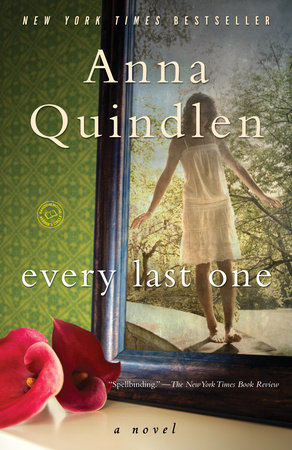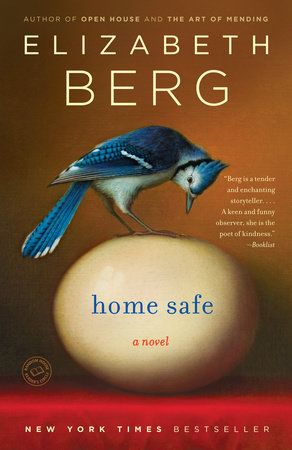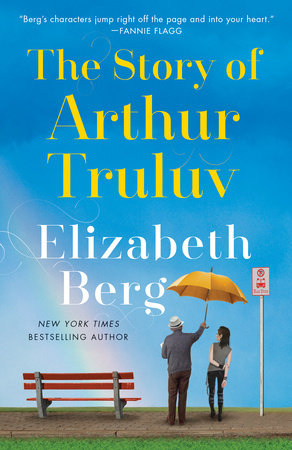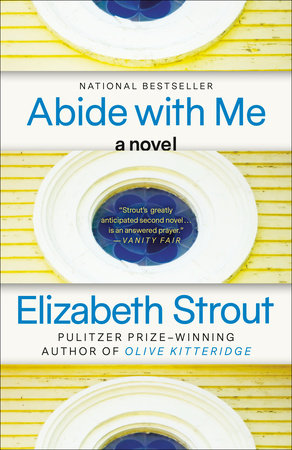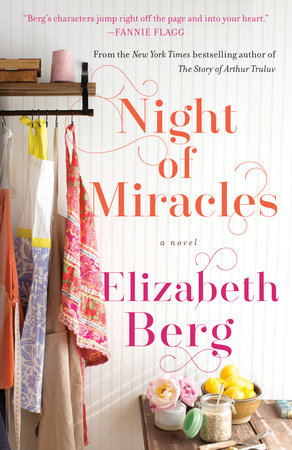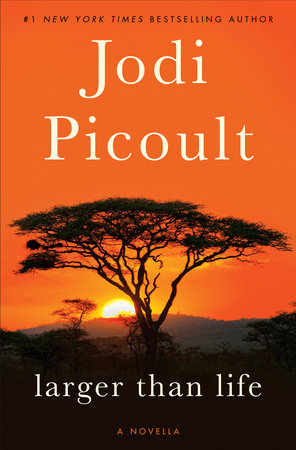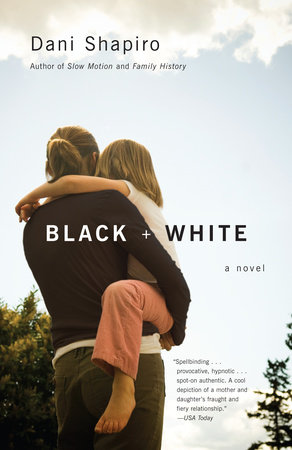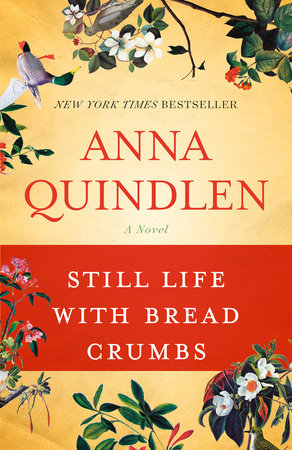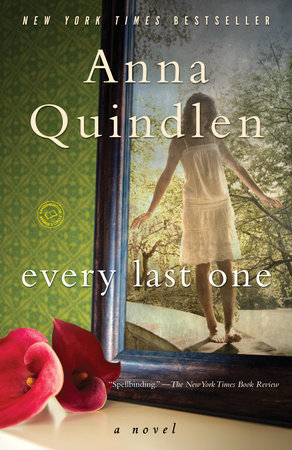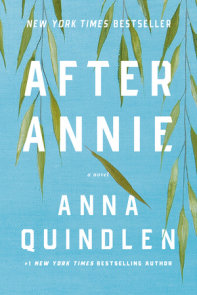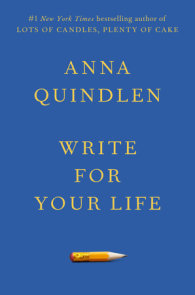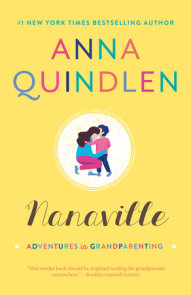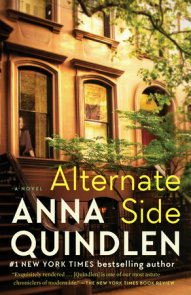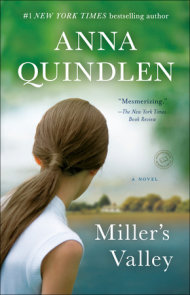Author Q&A
A conversation with Anna Quindlen
RANDOM HOUSE READERS CIRCLE: Every Last One is arguably your darkest novel since Black and Blue in 1998. What made you want to write about tragedy striking an ordinary family? Or was it a theme that first intrigued you?
ANNA QUINDLEN: For a long time I’ve been thinking about illusions of security and control, especially in terms of motherhood. We think that if we do the right things, provide the right kind of care and oversight, we can keep our children safe from any perils. I suspect that’s at the heart of the epidemic of so-called helicopter parenting we see today. But it’s completely illusory. Sure, you can teach your teenager to drive carefully, but what difference does that make when a drunk driver roars through a stop sign? That sense of randomness, of the contrast between the care that parenthood requires and the dangers lurking in the world, sometimes right under our noses, is what I chose to explore here. I also wanted to illuminate the ways in which small events in our lives can combine to create unexpected results. I tried to make that clear through a combination of the details that make up the bedrock of a happy family life, and the occasional suggestion that the bedrock had cracks within it. It required a kind of subtlety and control that I haven’t needed quite so much in my other novels.
RHRC: What is it like to write about devastating, violent events like those encountered by the characters in Every Last One? Was your day to day experience of writing this novel different from your last novel, Rise and Shine? What was the biggest challenge for you, in writing Every Last One?
AQ: I think everyone assumes I was in a funk during the creation of this novel, but it just wasn’t so. The explanation for that lies, I think, in the narrator, Mary Beth Latham. My experience as a novelist—this is my sixth—is that once you’ve nailed your protagonist, those around her come to life. And at some level she becomes your reason for being. I resonated with Mary Beth right away, felt that I knew her, which of course was critical since the book is written in the first person and is really her story. Most of the challenges were about how to make her real. It’s hard to write a novel about motherhood without creating either a plaster saint or a punching bag. I’m sick and tired of both those ways of looking at the very difficult, joyful and complicated task on which I’ve personally been laboring for the last quarter-century. Mary Beth is an ordinary woman, involved and distracted and smart and unaware, all of those things that simultaneously make up human behavior. That’s what I was after. And it’s what made me able to live in the world of this book, because I was living on her shoulder.
RHRC: Like Mary Beth, you are a mother of three. How much of you is in Mary Beth? Is she your favorite character in the novel?
AQ: When you’re a novelist people are always looking for the you of you within your books, often in your main character. But there’s nothing here even dimly autobiographical, except that I have three kids and I have good women friends. Ruby, Alex and Max are in no way modeled after my children, nor is Mary Beth modeled after me. You bring everything you know, everything you are, to the table when you write a novel. But my work has become less autobiographical as time has gone by. The most autobiographical of my novels is the first one, Object Lessons; the link to my actual life has lessened with each successive book. I think that’s pretty typical.
For some reason, my favorites are always secondary characters. It’s probably because I’m a Dickensian, and in his books the secondaries are the most vivid: Peggoty, Uriah Heep, the Cratchits. I love the English teacher in One True Thing and Cindy in Black and Blue. Sunny, Lydia’s brother in Blessings, is a real favorite, and I still have a soft spot for Irving Lefkowitz in Rise and Shine. Sometimes your favorites sneak up on you. Dr. Vagelos in Every Last One started out as a very minor character. As his role grew, he became more and more a moral center. I also like Mary Beth’s college friend Alice. She seems very real to me.
RHRC: Mary Beth tells the story of Every Last One in first-person, but she withholds certain things from the reader, and, perhaps more importantly, from herself. How do you think this limited perspective affected the novel? Could it have been any other way?
AQ: Actually, Mary Beth doesn’t have the opportunity to reveal all to the reader because the book is written in the present tense. I was very concerned when I started that that might seem like an affectation, but it’s really essential here. What did she know? What ought she to have known? How much do we really know our children? How much do they hide from us, and how much of the process of maturation is in that deception? All of those are critical questions the novel raises, but only if you are living the action of the book right alongside Mary Beth as it’s taking place. She’s learning about most of the action of the book at the same time we are, which was an absolute necessity here. So was the first person. This is the story of one woman’s life and the moment when it went awry. It never occurred to me not to have her tell it. That was the best way to tell the story, and to connect with its emotional truth.
RHRC: You’ve managed such an extraordinarily successful writing career along with being a full time mother. What has it been like to juggle the two?
AQ: There are lots of ways in which being a mother has helped my career as a novelist. I think the portrait of teenagers in this novel is a direct result of having mothered three. And my work habits are still determined by the rhythms of the school day. I write during the time when kids are in school although I have no kids in school any longer. It’s the legacy of my early mom life, when I dropped them off, ran home, wrote, ran back to school, then made dinner. I’ve retained an ability to compartmentalize from those years that served me in good stead while writing Every Last One. When I had young children I always left about an hour between the time I knocked off writing and the time I got to school; I thought of it as a psychic or emotional palate cleanser and I was convinced it would make me more present in the moment when I was with them, although in the years since I’ve been told more than once that that wasn’t necessarily true. But it certainly helped while doing this book. I gave myself some time each day to leave the Lathams and become myself again. Now that they’ve read the book, my family and friends seem rather astonished that I was relatively cheery during the years I was working on this. I wrote the book; Mary Beth got the life. Big difference.
Profiles frequently emphasize the sacrifices I made for motherhood: not rising to the top echelons of editors at the New York Times, leaving the paper to make room for my fiction writing at a time when I was deeply immersed in day-to-day child care. Trust me, I got a whole lot more than I gave. I got three years of a column called “Life in the 30s” which was a weekly account of my humdrum life when the boys were small. I developed an audience around writing about motherhood that followed me when I started to write fiction. And as a novelist, my understanding of the human condition was expanded by re-experiencing life through the eyes of our sons and daughter as they grew. They made me a better writer and a better person. That may sound saccharine, but it happens to be true. And now I have these three great adults with whom to discuss books and writing and what TV shows I should watch on a regular basis. I totally scored on the parent front.
RHRC: Motherhood is a central theme of many of your books. Why do you think the subject has held your interest, over the years?
AQ: I once wrote that reading makes us feel less alone. It’s why I love it so. But writing, if we touch a chord in others, can make both the writer and readers feel less alone, feel connected to others like themselves. My life experience, and thus my work, is often a reflection of being female in America. And while we’ve expanded expectations and opportunities enormously over my lifetime, there is still a kind of unique loneliness to childrearing for women. We so often do it in isolation. Add to that the fact that in our competitive, perfectionist culture, in which the price women are required to pay for freedom still seems to be martyrdom, almost everyone lies about motherhood. Part of that lying is loyalty—I can’t let on that my kid is the only one on the playground who can’t read or play the piano—and part of it is self-protection, since we’ve made hyper motherhood a measure of female success. The preferred answer to the question “How are you?” is always “Fine”, and the answer to the question “How are the kids?” is supposed to be “Great!” That’s true even if the accurate answers would be “terrible” and “a mess.” I think that produces its own kind of desperation, especially for women, who yearn to be emotionally open. Thank God for good girlfriends. That’s a theme in this book as well.
RHRC: Mary Beth’s friendships change during the course of this book. Are you suggesting that tragedy can end or alter even a close friendship?
AQ: I think that’s inevitably true. All of us have had the experience of a friend who was comfortable with ordinary interactions but buckled under the weight of cataclysm, and, conversely, of casual friends who somehow really stepped up when things were bad. And, as Mary Beth notes, we often have situational friendships. We become close to the moms with whom our kids are in preschool but drift away from them when the kids grow up and are no longer friends. In this novel, there is the friend who is lifelong, the one who can’t respond in a warm or helpful way to the changing emotional landscape, and the new friend who provides exactly what’s needed. I think that’s about par for the course.
RHRC: Mary Beth and Glen’s marriage rings very true. Tell us a bit about how you developed their relationship.
AQ: I’m offended by the people who suggested that their relationship was lame or passionless. That reflects what I think is an unrealistic expectation of long marriage. We don’t expect an 18-year-old girl to be the same as a 40-year-old woman. But we expect new marriage and established marriage to be the same thing. Mary Beth and Glen don’t have the same chemistry that they had twenty years ago. But they have something else, maybe something more important: they have history and stability. They have a deal, that they were once a couple but now they’re a family, and they’re at a time in their lives when raising that family is paramount. Maybe they are on the cusp of coming together again in a different way, with the kids poised to fly the nest. When I started to write about them, I wanted to show the kind of marriage that has its ebbs and flows, that has morphed into something that works for the moment and that likely will morph yet again.
RHRC: Every Last One raises many questions about parenting—when to micromanage, when to punish, and when to let go. In your opinion, is Mary Beth a good mother?
AQ: I think Mary Beth is a wonderful mother, sensitive, attentive and loving. But the whole point of this book is that sometimes that’s not enough. There are a million moving parts to raising kids, and you can’t always anticipate them all, especially when the outside world, other people, play such a huge role in their lives as they grow older. With independence there is one kind of pitfall; with overprotection, there is another. And sometimes you do everything right and something bad just happens. It’s as simple, and as scary, as that.
Of course, when things go wrong, it’s still the mother who gets blamed. Where was she? What was she thinking? I wanted to look at that phenomenon in this novel, too. I’ve been distressed at how many people immediately concluded that Mary Beth was at fault in the events of the book. But I wasn’t surprised. Despite the increased role of fathers in our society, there’s still a sense that motherhood is the big fail if anything goes wrong. Yet it’s independence that is the ultimate success for your kids. If your goal is to build strong people from the ground up, the only way to do that is to give them enough rope to sometimes make their own mistakes. That’s a big theme in the novel, balancing oversight and independence
I do think this sort of oversight is more frequently the purview of women. I used to say that my editorial direction on “Life in the 30s” was to write about what my friends and I were discussing on the phone. And then I would add, “If my husband had to write a column based on his phone calls…” I never got to finish that sentence. Every woman in the audience would bust up. It was assumed that women were in the business of emotional deconstruction, and men weren’t. Sometimes it means that we’re more engaged in certain aspects of our children’s lives. Sometimes it means, as Glen says of Mary Beth in “Every Last One,” that we’re way over involved.
RHRC: Your novels spur debate on serious, complex issues from euthanasia to domestic abuse, and now parenting and teenage depression. What sort of discussion do you hope this new book will provoke? What are the advantages of exploring an issue through fiction, rather than nonfiction?
AQ: I never think about issues when I’m working on a novel. Issues are things that happen to people in sufficient numbers to elicit widespread attention; in other words, they’re just life happening. Any issues grow out of the story. I don’t think you experience Bleak House, for instance, as a story about the convoluted British legal system, but as the story of a family and the way money, or lack of same, has poisoned relationships among them. A successful novel is always driven by character. And frankly, when I write, I’m mainly telling the story to myself. Thinking about audience is too daunting, and worst case, invites you to homogenize, to soften the hard edges of things. I hope readers will do what I do when I read a novel I like: think and talk about it in ways that will illuminate their own lives.
RHRC: Your focus has shifted in recent years from journalism to fiction. Is there anything you miss from your days as a full-time journalist and columnist? Are your writing habits different, depending on what you are working on? Describe a typical day spent writing.
AQ: I would say my most pronounced writing habit is trying not to write. I used to think this was just me, but recently I read an interview with the brilliant playwright Tony Kushner, and he said the same thing, which made me feel much better and made me suspect the attempt by writers not to write is more widespread than people think. My closest friend is a book reviewer and we talk every morning. I walk for an hour every morning, too. I would rather exercise than write—that’s how bad it is. But by about 10 AM, I just do it. I always have music on unless I’m reading my finished work aloud, which I always do before I hand anything in. It’s the only way to know if a sentence really works. It’s also the only way to know if dialogue sounds like human speech. I’ve read Every Last One aloud twice, once after the first draft, then after the last. I had to give up after that second time because I was so wiped from weeping. My elder son, who is a whiz at grammar, did the final copy edit so I wouldn’t have to look at it again.
Recently I was spending some time with one of the great masters of the modern novel. And he said, “You know, the problem with talking about writing a novel is that you have to pretend you know why you do what you do.” In the show Sondheim on Sondheim, Stephen Sondheim talks about those happy moments when you go into a trance and produce something good. The bottom line is that there’s a certain mystery to reproducing human emotion in words so that it feels true. I don’t know how I accessed, lived and described grief of a sort I have never personally experienced, just as I don’t know exactly how I felt the emotions of an abused woman in Black and Blue. People assume you do research. I’ve had years of doing research, as a reporter and a columnist, but all I bring to the novels is my imagination. If you can imagine it, it can happen.
RHRC: When did you realize you wanted to be a writer?
AQ: I can’t remember the point at which I decided I wanted to do it for a living. But I do know that I got constant positive reinforcement from teachers for my writing. I always say that I am a writer because of teachers, because they encouraged me to continue with it. By high school, I was fairly sure it was the path I would follow.
RHRC: What writers would you say have had the biggest effect on you? Share with us some classic authors, and some contemporary, whom you admire.
AQ: I am hugely influenced by Dickens and the notion that it is possible to combine a good story with an interest in social welfare. At opposite ends of the spectrum, I admire Jane Austen for her sense of restraint and irony, and Faulkner for his fearlessness and emotion. For more modern writers, I love Alice McDermott, Don DeLillo and Russell Banks. I think all my work is influenced by growing up Catholic, not necessarily in terms of content but in terms of themes and values. Blessings, for instance, is a novel about redemption. Actually, in some fashion all my novels are about redemption.
RHRC: What are you reading now?
AQ: When I’m revising a novel I can’t read literary fiction, so I only read mysteries (although increasingly some of them are quite literary.) My friend Jean just introduced me to a Scandinavian novelist named Karin Fossum whom I really have taken a shine to. Her entire backlist is in a stack on my bedside table. I read The Thousand Autumns of Jacob de Zoet by David Mitchell soon after it appeared, and recommended it to everyone. It is a modern novel that could just as easily have been written in 1880, and it is astonishing in its richness, complexity, and characterizations. Dickensian, which is the greatest compliment I can pay.
RHRC: What’s next?
AQ: I’m working on a memoir about aging that will be published around my 60th birthday. Years ago I wrote a column called Life in the 30s, the columns that appear in Living Out Loud, and people always wanted me to go back to those kinds of personal observations. So I guess the memoir could be thought of as Life in the 50s. I’m intrigued by the notion that we’ve gained 15 years of life expectancy since I was born. We’re figuring out how to use those years, especially in our 50s and 60s, when people once wanted to slow down. There was an old ad slogan: you’re not getting older, you’re getting better. It was for hair color, I think, which I don’t use; I wear my grey proudly. But the sentiment is true. I am better. Except for my knees.
